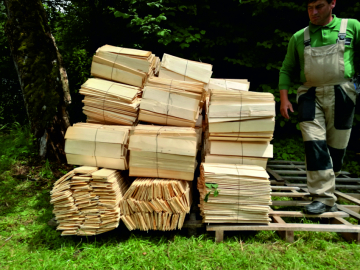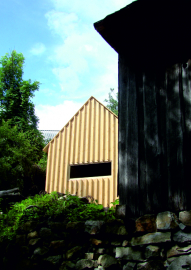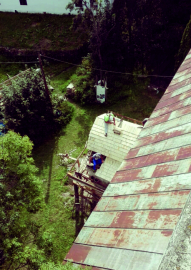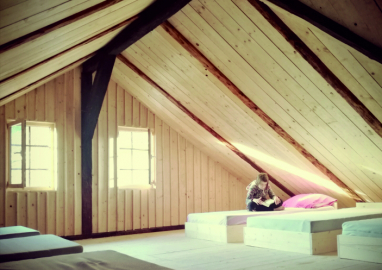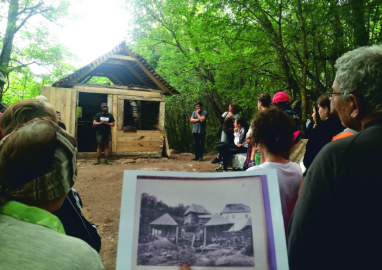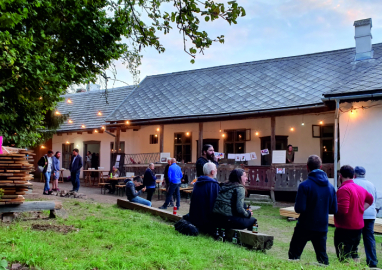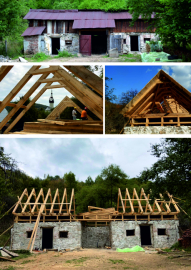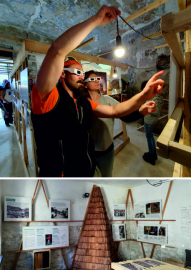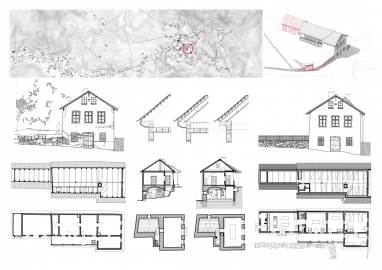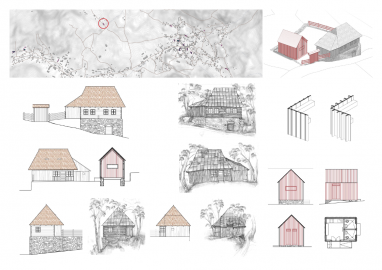Adopt a House in Rosia Montana
Adopt a House is a design & build restoration program started almost a decade ago in the historic mining site of Rosia Montana. It aims to reconnect the local community with its unique heritage, a process that has resulted not only in a number of recovered historic buildings but also in an ongrowing young professional community.
Rosia Montana is a Roman mining site in Romania, nominated for UNESCO World Heritage listing (recommended for inscription by ICOMOS), an impressive, extensive and unique site that is under threat by open cast mining. This imminent threat has woken the Romanian civil society and sparked large protests in 2013, when tens of thousands of people marched all over Romania and abroad against its destruction.
The Adopt a House project started in such a context, as a desperate act to document and preserve. Our first interventions date back to 2007 and continue annually. Adopt a House started In 2012 as a strategic program, based on crowdsourcing, crowdfunding and volunteering, for the benefit of local and professional communities. Hundreds of volunteers, mostly architecture students from Romania and abroad experienced design and work hands-on in a highly vulnerable context.
While the main goal of the program was keeping the historic buildings from vanishing, it evolved into an organic, perseverent action for heritage and community fueled by the power of public mobilisation towards heritage conservation. We are not only developing restoration, architectural projects - materialized in soft, discreet design gestures, but also scenarios of sustainable development and ways of getting the community constantly involved and aware of the real potential and resources of the place. Our projects aim at recovering historic and public values and context, recovering traditional crafts and materials, reconnecting local and professional communities to the universally important landscape of Rosia Montana, while also confronting the emergency.
Every year we organize public events, debates, concerts, guided tours, exhibits, as part of the intervention process, precisely targeting this paradigm shift: heritage practice is part of the contemporary architectural phenomenon; heritage is not a hindrance, but a rich resource, both cultural and economic, that can ensure the future sustainable development of the site for the decades to come.
We function on a very low budget, mostly crowdfunded or part of grant competitions, with no help from local authorities (on the contrary!) and also in a very difficult administrative context (the town has no zoning plans and regulations), so we design each of our interventions following these fundamental considerations: it has to be inexpensive, it has to use local materials and involve local craftsmen, it has to be as educational as possible for the participants and the local community, it has to attract as much general public as possible and to be an easy to replicate model for other cases and/or communities. None of our interventions need special maintenance, yet we offer assistance and practical help when required. For all our interventions respect traditional, environmentally friendly methods and materials, we also published practical intervention guides.
None of the participants need special training or background, still we are very happy to see that our project has a significant impact among young architecture professionals and, while organized mainly as a summer school, it manages to shape their perspective on heritage and community building.

